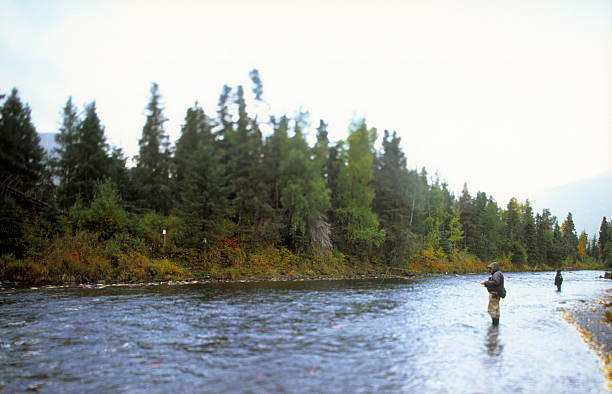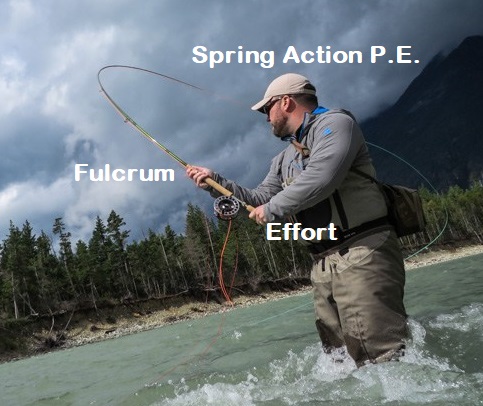The Fly Rod

(Credit: Getty Images)

(Credit: Bill's Forum)
The rod is an integral connection between the fisherman, the fish and the current of the river. The physical action of the fly-fisherman moving the rod (system) forward and backwards has a direct effect on the motion of the rod, the line, and how the fly reacts. The energy produced by the human body transfers through the rod, line, and into the fly and surrounding air mass and water system. While you are fishing you can feel the energy of the river in your hands while you hold the fly rod. The river causes vibrations in the pole which transform through the lure, the line, and then into the fly rod. The strength of these vibrations varies with the weight and strength of your fly rod. The same could be said for the size of fish you are catching.

(Credit: Bill's Forum)
Discovery magazine has a great online article with this quote that describes the Fundamentals of a cast, which is in turn attached to a thicker and much longer braided line. The trick is launching the virtually perfectly “While other fishermen lazily dangle bait in the water, fly-fishers sweat over strategy and technique, struggling to imitate with rods, lines, and lures the delicate landing of a fly on the river’s surface. To catch a fish, a fly-fisher sends out a wispy lure attached to an almost invisible 7- to 15-foot-long leader weightless fly to a distant spot with deadeye accuracy. The thicker line must hit the water first, allowing the leader and fly to then gently alight upon the water just the way an insect might settle on a ripple, persuading the prey (trout and salmon, often, or perhaps a largemouth bass) to bite.” Below, is a video discussing the physics, grip and casting technique of a fly rod.